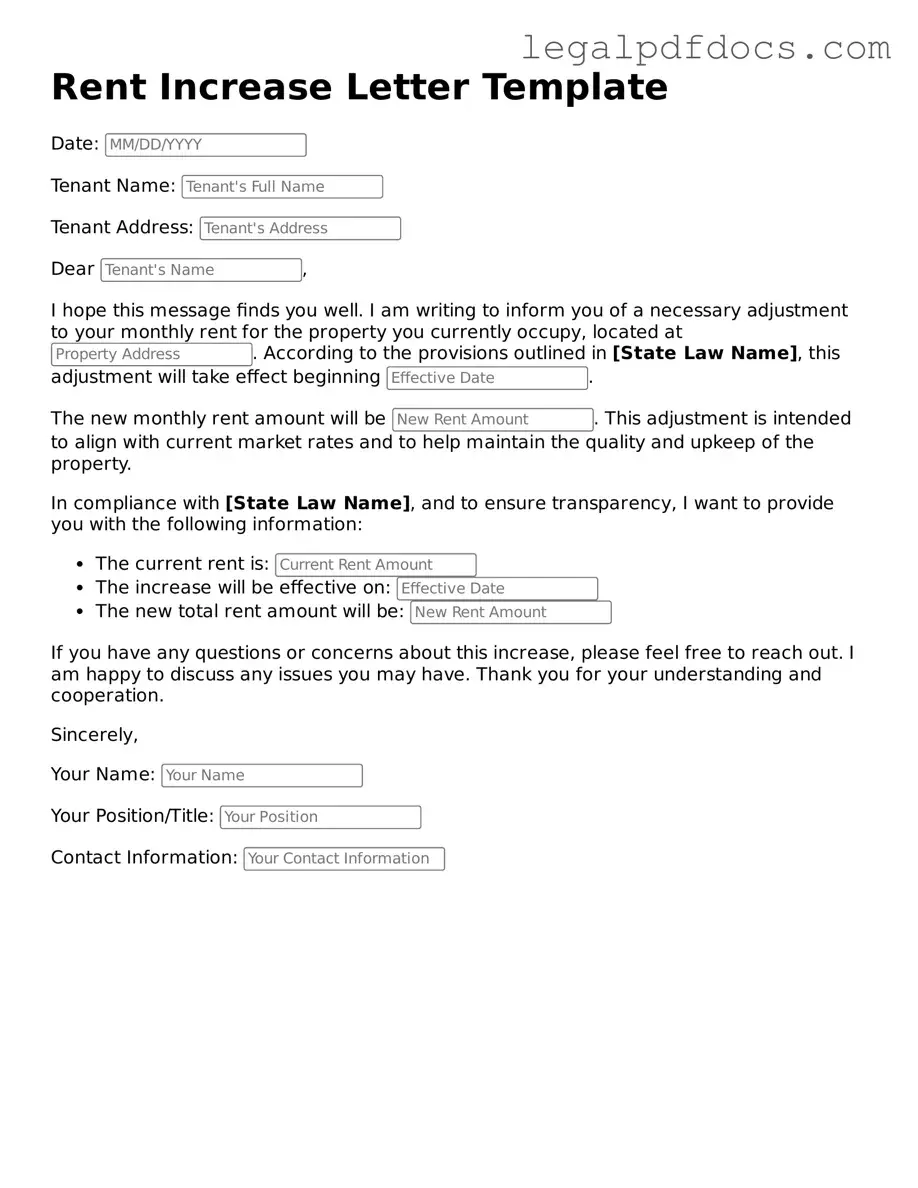When it comes to renting a property, changes in rent can be a sensitive topic for both landlords and tenants. A Rent Increase Letter serves as a formal notice from a landlord to a tenant, indicating a change in the rental amount. This letter typically outlines the new rental rate, the effective date of the increase, and any relevant details that tenants should be aware of. It’s important for landlords to provide this notice in a timely manner, adhering to local laws regarding notice periods, which can vary significantly from one jurisdiction to another. Clear communication is key; therefore, the letter should also explain the reasons for the increase, whether it's due to rising property taxes, maintenance costs, or market adjustments. Tenants, on the other hand, benefit from understanding their rights in response to such notifications, including the ability to negotiate or seek clarification on the increase. In this article, we will explore the essential components of a Rent Increase Letter, the legal requirements surrounding it, and best practices for both landlords and tenants to ensure a smooth transition during this often challenging process.
